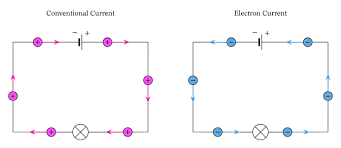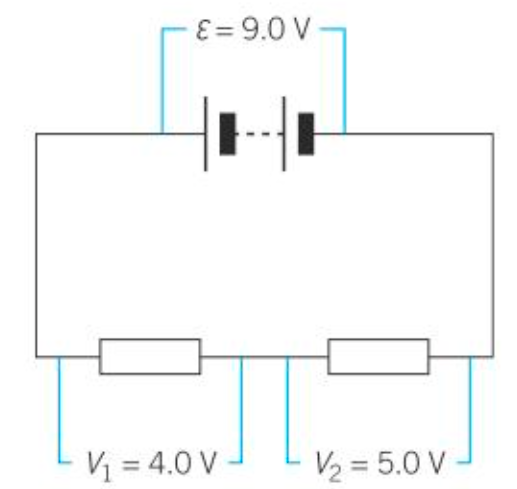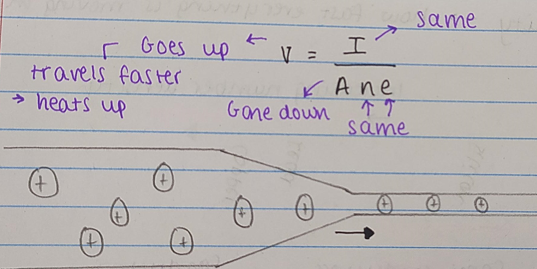Chapter 8: Charge and current
1/20
Earn XP
Name | Mastery | Learn | Test | Matching | Spaced |
|---|
No study sessions yet.
21 Terms
The current and voltage in a series circuit
Current: Same at any point
Voltage: splits up at each component
The current and voltage in a parallel circuit
Current: Splits up at each branch
Voltage: same across each branch
Definition of electric current
Rate of flow of positive charge carriers (not just electrons)
e.g. electrons are common in metals
ions are common in liquids
Unit of current
Amperes (Amps)
Symbol of current
I (capital i)
Symbol of charge
Q
Unit of charge
Coulombs (C)
Quantisation of charge
Charge comes in definite finite quantities
Positive and negative charge has a definite minimum magnitude, known as the elementary charge
Elementary charge
The definite minimum magnitude of positive and negative charge
elementary charge (e) = 1.6 × 10-19 C
Net charge
Gain / loss of electrons by an object
Q = ± ne
Net charge on the object in coulombs
Number of electrons (either added or removed)
Elementary charge (1.6 × 10-19 C)
Electrons in metals
Closely packed and arranged in a crystal lattice structure
Positive metal ion - fixed
free electrons (attracted to +ve) that carry charge and move through as electric current
Electric current in metals
The greater the rate of charge flow, the greater the electric current in the wire. A larger current can be due to:
greater number of electrons passing a given point / second
same number of electrons moving through faster
Conventional current vs. electron flow
Flow of positive charge from the positive to negative terminal.
Flow of negative charge from the negative to positive terminal.

Kirchhoff’s Laws
current flowing into a junction = current flowing out (conservation of charge)
the potential difference across the battery is the same as that across the rest of the circuit

Resistance rule - Kirchhoff’s second law (series)
VT = V1 + V2
[USING OHMS LAW => V = IR]
ITRT = I1R1 + I2R2
[IN SERIES I (current) IS THE SAME]
RT = R1 + R2
Resistance rule - Kirchhoff’s second law (parallel)
IT = I1 + I2
[USING OHMS LAW => V = IR re-arrange to I = V]
VT/RT = V1 /R1 + V2/R2
[IN PARALLEL V (voltage) IS THE SAME]
1/RT = 1/R1 + 1/R2
Mean drift velocity
Average velocity of charged particles as it travels through a conductor.
Number density
Number of free electrons per cubic meter of material:
larger number = better conductor
Semi-conductors
Less free electrons - electrons need to move faster for the same current, so they heat up more.
I = Anev [on the formula sheet]
I = current (Amps)
A = cross sectional area of the conductor (m2 )
n = number density (m-3)
e = elementary charge (C)
v = drift velocity (ms-1)
If the area is decreased, what happens to the mean drift velocity?
The electrons have to move faster to maintain the same current.
